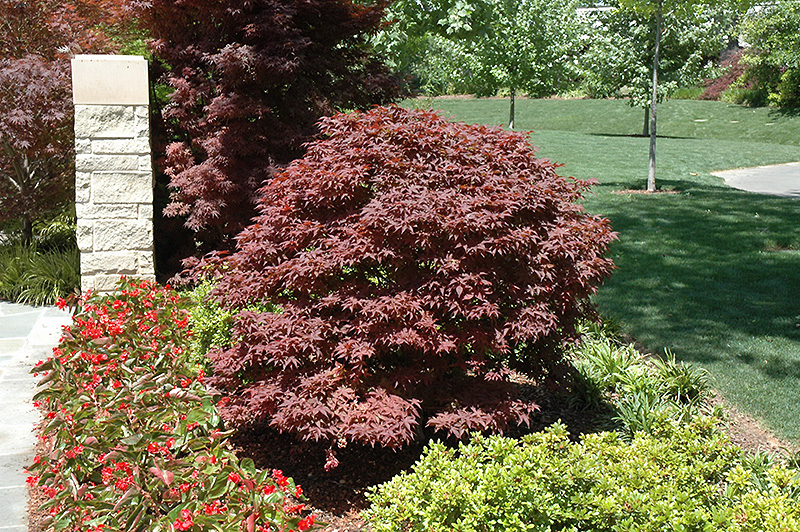Japanese Maple, Rhode Island Red Acer palmatum 'Rhode Island Red' Height: 6 feet Spread: 6 feet
Sunlight:
Hardiness Zone: 4b Description: A stunning landscape choice, this fine accent tree features dense compact branching and bright red spring foliage that darkens to deep red through summer; outstanding orange-red in fall. Needs afternoon shade and wind protection. Ornamental Features Japanese Maple, Rhode Island Red is primarily valued in the landscape or garden for its ornamental globe-shaped form. It features subtle corymbs of red flowers rising above the foliage in mid spring before the leaves. It has attractive burgundy deciduous foliage which emerges cherry red in spring. The lobed palmate leaves are highly ornamental and turn outstanding shades of orange and red in the fall. The rough gray bark and red branches add an interesting dimension to the landscape. Landscape Attributes Japanese Maple, Rhode Island Red is a dense multi-stemmed deciduous shrub with a more or less rounded form. Its relatively fine texture sets it apart from other landscape plants with less refined foliage. This is a relatively low maintenance shrub, and can be pruned at anytime. It has no significant negative characteristics. Japanese Maple, Rhode Island Red is recommended for the following landscape applications; Planting & Growing Japanese Maple, Rhode Island Red will grow to be about 6 feet tall at maturity, with a spread of 6 feet. It has a low canopy with a typical clearance of 2 feet from the ground, and is suitable for planting under power lines. It grows at a slow rate, and under ideal conditions can be expected to live for 80 years or more. This shrub should be grown in a location with partial shade and which is shaded from the hot afternoon sun. It prefers to grow in average to moist conditions, and shouldn't be allowed to dry out. This plant should be periodically fertilized throughout the active growing season with a specially-formulated acidic fertilizer. It is not particular as to soil pH, but grows best in rich soils. It is somewhat tolerant of urban pollution, and will benefit from being planted in a relatively sheltered location. Consider applying a thick mulch around the root zone in winter to protect it in exposed locations or colder microclimates. This is a selected variety of a species not originally from North America.![]()
![]()
![]()
![]()
![]()
![]()
![]()
![]()
![]()
![]()
![]()
![]()
![]()
![]()


